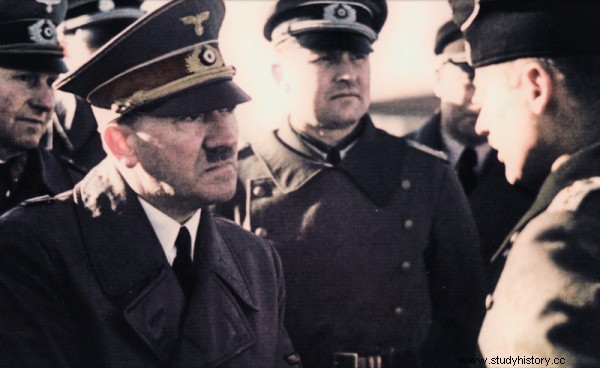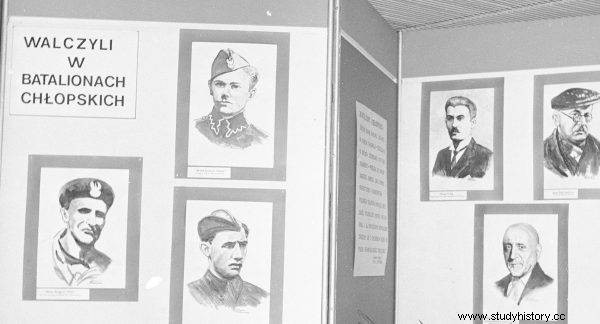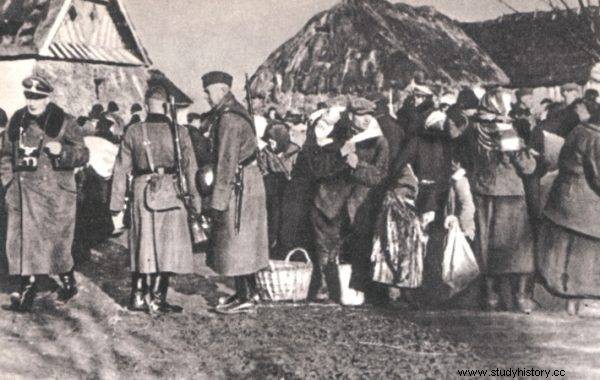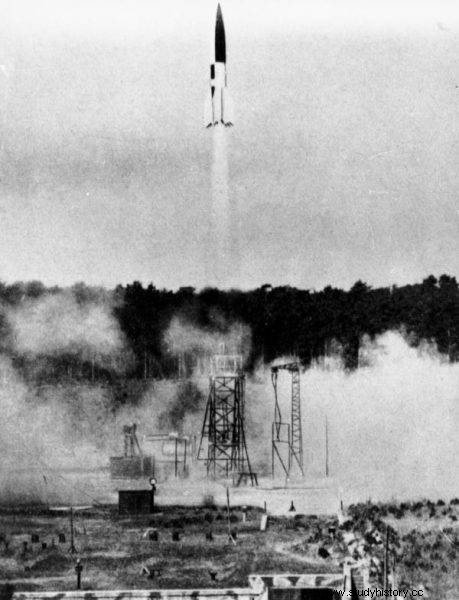They were the second largest military formation in the Underground Poland - they had 170,000 men under arms. Why do we forget about the Peasants' Battalions?
They caused severe losses to the occupiers and even smashed regular German troops. Many times they saved the inhabitants of Polish villages pacified by the Germans and Ukrainians from death. Why have the Peasants' Battalions been forgotten by history and are not taught in schools? Was it because their soldiers came from the countryside?
The words of the poet "the story is silent deafly about them" fit perfectly into the Peasant Battalions. There are few publications about them, and anniversary celebrations are rare. And if they are, they are modest in size. On the other hand, we are inundated with publications on less numerous and less effective branches of the National Armed Forces, which are under serious accusations, for example of collaboration with Germany. It is difficult to understand this state of affairs, taking into account the numerous combat successes of the Peasants' Battalions, for example during the fights in defense of the Zamość region or the Volyn region.
First there was "Thorn"
After the September defeat, all political forces in Poland began building an underground state and underground armed forces. Also the popular movement joined the fight against the occupier. Initially, the underground activity in the countryside was organized from the grassroots level, later peasant conspirators were placed under the command of the organizing Union of Armed Struggle. However, the popular political organizations were dissatisfied with this fact and decided to create their own combat units.

On Hitler's order, the Germans had already begun the implementation of Generalplan Ost, under which they expanded the so-called Lebensraum
Apart from political issues, such a decision was dictated by the current situation. It was necessary to send armed men "out into the field" as soon as possible, who would immediately fight the Germans and defend the village against pacifications, displacements and mass executions. It was impossible to wait for "Warsaw" to create troops from scratch, train and arm them. There was simply no time for this, because on Hitler's orders, the Germans had already started the Generalplan Ost project, under which they were expanding the so-called Lebensraum, or "living space".
This plan envisaged, inter alia, the eviction of Polish villages and the settlement of German settlers there. The response of the people's movement to these actions was the establishment of an armed formation called "Chłopska Straż" (Peasant Guard), which was given the code name "Chłostra" (similar to the word "flogging" - intentional). Later the name was changed to "Peasant Battalions".
Cooperation with the Home Army
From the very beginning, the ZWK-AK command was against the existence of an independent peasant militant organization and sought to incorporate it into the Home Army, trying to gather under one command all the troops fighting against Germany, regardless of their political roots. It was going smoothly, because the rural environment reluctantly accepted the incarnation order. It was only in March 1943 that the BCh's official agreement with the Home Army was signed. The merger was formally completed in 1944, but most of the BCh combat units remained organizationally outside the Home Army.

Exhibition of portraits of the soldiers of the Peasant Battalions
Regardless of the decision "upstairs", in the field BCh troops regularly cooperated with partisan units of the Home Army and jointly organized actions against the Germans. The relations with the units of the National Armed Forces, which the village regarded as "your sons" and bandits, were worse. In turn, the nationalists saw the BChs as communists wanting to change the political relations in force in pre-war Poland. The BCh informed the Home Army Headquarters about cases of cooperation between the NSZ and the Gestapo and about politically motivated murders committed by the NSZ.
Strong and well armed
The largest armed formation of the Polish underground was, of course, the Home Army, numbering - according to the reports of the Main Headquarters - about 400,000 soldiers. The Peasant Battalions reached nearly 170,000 by the end of the war. At the peak of its development, the National Armed Forces numbered 75,000, while the People's Army consisted of around 50,000 people.
Due to their large numbers, knowledge of the area and the support of the village from which they came after all, BCh troops were able to fight evenly with the Germans in the field. In many cases, they even managed to destroy regular Wehrmacht or SS units, as well as obtain weapons and ammunition as well as heavy equipment, including tanks (!). It was the provincial branches of the BCh who, reacting to the situation, were the first to fight the UPA when it launched attacks on Polish villages in the Borderlands.
During the war, peasant troops carried out about 6,000 combat actions, fought 900 battles and skirmishes. Among them were the battles of Wojda and Zaboreczno and fights in defense of the so-called Of the Pińczów Republic.
Successes of Peasant Battalions
What other successes were they?
The destruction of the ammunition train near Gołębie, which took place on September 12, 1943. Three BCh platoons under the command of Stefan Rodak pseud. Rola blew up the tracks, derailed the locomotive and attacked the train escort. The Germans were beaten to the leg. When it turned out that there were no small arms and ammunition on the train, but only aerial bombs and Nebelwerfer missiles, "Rola" ordered the train to be blown up. Two locomotives and 56 freight cars with their cargo were launched into the air. The explosions could be heard within 50 kilometers, and the track section between Puławy and Gołębie was impassable for two days.
On May 31, 1944, BCh soldiers from the Lublin district set up an ambush on the Tannenberg ship, carrying German and Turkmen soldiers after the pacification of the Zastowo Polaneckie village. A unit of Jan Jabłoński "Drzazga", previously alerted by scouts, waited for the ship on the Vistula near Machów. The BCh men started firing at the vessel from the shore. 60 Germans were killed and 50 were injured. The stained ship plunged into the water and, after being towed to Puławy, was considered unrepairable. "Drzazga" attacked because a strong Home Army unit under the command of Bolesław Frańczak, pseudonym. Argil, who joined the fight at a decisive moment.

Certainly, the most important achievement of the BCh troops were the fights to defend the villages in the Zamość region, pacified by the Germans.
On July 1, 1944, in the town of Dziewule, soldiers from the BCh battalion of Marian Grzebisz "Wicher" and Marian Kosieradzki "Franciszek" immobilized a military train, smashed a military unit guarding it and seized many weapons and ammunition. The loot filled 10 peasant carts!
The breakdown of the prison in Pińczów is another successful campaign of rural partisans from BCh. They captured the prison twice:on June 10 and July 13. Each time they released several hundred prisoners. After the second action (on July 13), the Germans decided that the prison should be liquidated. In turn, on July 15, BCh men broke a prison in Opole Lubelskie, releasing 30 prisoners.
Against tanks
Two weeks later, on August 2, near Słupia (Pacanów commune), the BCh unit fought a victorious battle with the regular units of the German 17th Panzer Division. Partisans under the command of Piotr Pawlina attacked and crashed the transport column. Many weapons and ammunition were obtained, including three mortars.
The combat effectiveness of peasant guerrillas is evidenced by several cases of seizing heavy weapons:armored cars and tanks. In the case of irregular units, such successes are extremely rare. Most of us know the story of the capture by the soldiers of the Zośka battalion of two Pantera tanks in Warsaw. But the story is completely forgotten about how on 23 July 1944 a BCh unit from the Puławy region, under the command of the aforementioned Stefan Rodak "Rola" and Zygmunt Kozak "Walter", obtained a German armored car Sd.Kfz in Kurów Lubelski. 231 and incorporated it into his transport column.

The soldiers of the Peasant Battalions also contributed to the intelligence field. They took part in the reconnaissance of the Blizno rocket range, observing the attempts to launch V-1 missiles and V-2 missiles
Two days later, on July 25, platoons of the People's Security Guard (derived from BCh) from the Przeworsk Oblast attacked a Wehrmacht unit of about 300 people near Rączyna. The combat report from this battle is hard to believe, but it goes like this:
“Five Germans were killed in combat and one was seriously wounded. Others scattered across the forest in panic. Captured five tanks, six armored cars, one passenger, one anti-aircraft gun, six machine guns, 17 motorcycles, 32 bicycles, three horse-drawn carts and a large amount of small arms and ammunition. ”
On the same day, BCh soldiers from the Krasnystaw region from the units of Jan Pochwatka "Żółte" and Józef Pochwatka liquidated the German tanker, and the four remaining tankers escaped ... leaving the tank behind. Unfortunately, the further fate of this machine is unknown.
Another success in the fight against armored weapons was achieved on January 13, 1945, when a BCh unit from the Radomsko region under the command of Aleksander Ostałowski attacked a German unit of about 100 people in the Wielgomłyna-Kruszyna-Zalesie region. After a two-hour fight, the unit was defeated and about 40 Germans died. In this skirmish, the guerrillas captured two armored cars, four trucks, three motorcycles and three passenger cars.
Soldiers and spies
It is worth adding that the soldiers of the Peasants' Battalions also contributed to the intelligence field. They took part in the reconnaissance of the Blizno rocket range, observing the attempts to launch the V-1 and V-2 missiles, locating the places where they fell, and looking for the remains of crashed rockets. Parts found in forests and swamps were sent by the Home Army Headquarters by air to London, where they were subjected to technical inspection. 13 parts of the rocket were collected and delivered by Michał Kasza, BCh commander from Niwiska.
Certainly, the most important achievement of BCh units were fights to defend the villages in the Zamość region, pacified by the Germans, and also from the villages of Volhynia, attacked by the Ukrainians. Thousands of inhabitants of small villages and hamlets were saved from extermination by the BChs. A separate article should be devoted to this issue.
